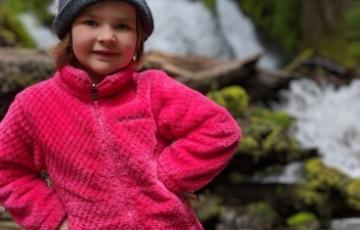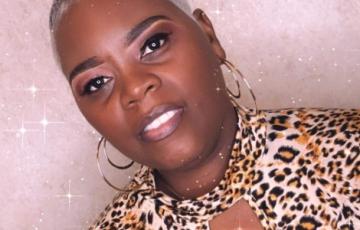Search Results
Hair Loss
Drugs that damage or destroy cancer cells also affect normal cells. Rapidly dividing cells, such as hair follicle cells, are the most affected. This is why hair loss (alopecia) is a common side effect of chemotherapy. Hair loss can range from thinning to baldness. It may be sudden or slow. You may also lose hair from other areas of your body such as eyelashes and eyebrows.
Hair usually grows back after treatment ends. The thickness, texture or color of hair may be different when it grows back.
Refractory and Relapsed Childhood ALL
Most children with ALL are cured with standard chemotherapy treatments. But about 15 percent of young patients have ALL that returns after remission. This is referred to as a “relapse” of the disease (or “relapsed ALL”). Some children are unable to achieve a remission because their cancer does not respond to treatment. In these cases, the disease is referred to as “refractory” (or “refractory ALL”).
Myeloma Staging
Doctors use imaging and laboratory test results and bone marrow examination findings to determine the extent of disease. This determination is called “staging.” Staging helps your doctor predict the myeloma's progression and develop a treatment plan.
Myeloma has three stages numbered from 1 to 3. Often doctors write the stage in Roman numerals. You may see stage 1 written as Stage I, stage 2 written as Stage II and stage 3 written as Stage III.
Signs and Symptoms
Essential thrombocythemia (ET) is often detected during a routine blood test before an individual has any symptoms.
The signs and symptoms of ET are linked to high platelet counts that cause the development of a thrombus (blood clot). The symptoms include:
Graham
I am joining former England and Crystal Palace footballer and leukemia survivor, Geoff Thomas, and 23 other teammates to cycle the full Tour de France route one week ahead of the professionals to raise funds for the UK charity Cure Leukaemia. It's three huge goals — riding the Tour de France, raising $40,000 myself, and the team’s goal of $1 million. But with The Leukemia & Lymphoma Society’s (LLS) help, I know I can achieve it.

Whitney
I am delighted to be a new member of the Clinical Trial Support Center team at The Leukemia & Lymphoma Society (LLS)! After eight years as a clinical nurse, charge nurse, and assistant nurse manager at various oncology hospitals across the country, I am honored to now work with blood cancer patients as a Spanish-speaking, CTSC nurse navigator.
Ellise
In November 2015, I began experiencing persistent hives, severe fatigue, and chest pain that I couldn’t explain. At the time, I was managing a demanding schedule, and I initially attributed my symptoms to stress. But as the symptoms worsened, I knew something was wrong. I visited multiple doctors and even saw a dermatologist who performed a biopsy and ruled my condition as eczema. I researched tirelessly, determined to find answers, but my concerns were dismissed. One doctor even told me I was “too young to have cancer.”

Casey
It was in May, 2014 that 24-year-old Casey Moore began experiencing her first symptoms of chronic myeloid leukemia (CML). For a week straight, Casey had been vomiting every day and was losing a significant amount of weight. This was unusual, as prior to her symptoms, she considered herself a happy, healthy woman focused on her relationship and career. At the time, she was living with her boyfriend and working full time in a chiropractic office -- with no apparent signs of an illness.
Charlene
Cancer. That is a word that is scary. So many of us have friends, family and co-workers that are impacted by some type of cancer, but you never think it will be you. The word conjures up fear. Fear of treatment, fear of death and fear of what will be expected of you to deal with and hopefully survive.

Sasha
When five-year-old Sasha had her birthday in June, there was more to celebrate this year — she had just gotten her port removed and was officially done with blood cancer treatment.
Sasha was just 2 years old when she was diagnosed with acute lymphoblastic leukemia in October 2017. She began intense treatment right away, which continued until right before her fifth birthday. Sasha spent countless days at the hospital fighting for her life and enduring the brutal side effects that came with treatment, but she never lost her charming personality and bright smile.

Makenzie
My daughter Makenzie was diagnosed with chronic myeloid leukemia (CML) in January 2013, when she was just four years old. She had no signs or symptoms of leukemia. One day, Makenzie had a sore throat and we made an appointment with her pediatrician. Turns out she did have strep throat, but an exam also revealed her spleen was very enlarged. At that point, her pediatrician did bloodwork and learned that Makenzie's white cell count was through the roof. We were sent to Texas Children’s Hospital where later that evening she was diagnosed with CML.

Diana
It’s only cancer. As blasé as that may sound, I work for the Alzheimer’s Association as Walk Manager of the million-dollar Cincinnati Tri-State Walk to End Alzheimer's. Alzheimer’s disease has no effective treatment. No prevention. No cure. It’s always fatal. So, when the doctor came into the emergency room at 3:30 a.m.

Jack
Jack is a particularly big fan of the Leukemia & Lymphoma Society. His is an active Patient Advocate managing a local support group for patients and caregivers interested in his rare blood cancer, he participates in LLS' First Connection program, has helped with LLS' Team in Training and Light the Night recruiting efforts. He received LLS' appreciation award "For Outstanding Commitment and Support of Advocacy and Patient Quality of Life" in June 2104.

Patty
On January 19, 2012, I lost the love of my life to acute myeloid leukemia (AML). We were together for 21 years and this was not how our love story was supposed to end. Too young, too soon… still so much to do, to see, to experience – How do you go on? How do you continue life without the other half of you? How do you stop crying in the shower, before the water runs cold? How do you get dressed, put on a smile and face the world – alone? How do you believe again, when everything you believed in is gone?

Vonshel
Hi, my name is Von, and back in 2008, I was diagnosed with breast cancer. I didn't want to die, but prayer and God sent me right to the perfect doctor: Dr. Moran from Brunswick, GA. I got through chemotherapy and radiation with a breeze, and I'm now in remission for 13 years.

Jordana
Jordana was busy being a mom, wife, and radio host when she began experiencing fatigue, hot flashes, and bruising in the fall of 2020.
“I've been feeling crappy for a few months, very fatigued. About two weeks ago I noticed some large bruising on my legs but didn't remember bumping myself,” Jordana wrote in her first journal entry on CaringBridge. “I went for some bloodwork. Tuesday night my doctor called and said I need to go to the ER as my platelets were low. They admitted me, did a bone marrow biopsy, and 12 hours later told me I had leukemia.”

Alayna
September 8, 2021: I didn’t know it at the time, but the mass I found in my neck the night before I started my senior year of high school would forever change my life.
Luigi
Luigi was diagnosed with primary mediastinal B-cell lymphoma (PMBCL) during his junior year of high school, at the age of 16. During that time, Luigi was preparing for college applications and getting ready to play in his varsity basketball and varsity volleyball season. But all of that came to a halt with his diagnosis. While undergoing multiple rounds of dose-adjusted chemotherapy, Luigi continued to push himself and decided to get home schooling. He also continued to support his basketball team in the sidelines as much as he could.

Jania
In November 2018, I was diagnosed with acute myeloid leukemia (AML). It's a type of cancer of the blood and bone marrow that progresses very rapidly. When I was initially diagnosed, I believed my life was over. As a seventeen-year-old high school student attending school from a homeless shelter, going to bed hungry most nights, I considered dropping out to help my mother with my younger sister and brother. I couldn't fathom the financial burdens that would follow with medical treatment. I felt like the more I attempted to correct things, the worse they became.

Nino
Five years ago, I was diagnosed with stage 4 Hodgkin lymphoma (HL). After dozens of chemo treatments, an unplanned trip to the emergency department, and a three-week stay at the hospital for a stem cell transplant, I am happy to say this guy (makes a fist with thumbs pointing to self) is "IN REMISSION." I'm cancer-free! Butttt . . . as much as I want to say "**** you, cancer" and show you how my physical body changed over the last year, I'm NOT going to make this post about me.

Zac
In 2019, at 32, several symptoms culminated and, in hindsight, were red flags to the disease progression of acute myeloid leukemia (AML). I was less than 90 days into a new job in residential construction. I did not pay attention to what my body was telling me (extreme fatigue, excessively bleeding gums after a dental exam, bruising, and petechiae on my chest and upper extremities). After a busy weeknight trip to the grocery store, my body made me stop to pay attention with a 103.2° fever. With that, I drove myself to the local emergency room.
Coy
My son, Coy, was diagnosed with Hodgkin lymphoma (HL) on May 5, 2023. He was a junior at the United States Coast Guard Academy (USCGA) and had just won national runner-up in the NCAA Division III national wrestling tournament in March. He was a 4.0 student and had just been selected as Regimental Commander for the fall of his senior year. He returned home to secure and begin treatment. It was a challenge getting him into treatment, however, with great persistence, he was able to secure treatment with Dr. Allison Rosenthal at the Mayo Clinic in Phoenix, Arizona.
Chemotherapy
Because of acute lymphoblastic leukemia's (ALL's) rapid growth, most patients need to start chemotherapy soon after diagnosis.
Chemotherapy drugs kill fast-growing cells throughout the body including cancer cells and normal, healthy cells. The damage to normal, healthy cells can cause side effects. Yet, not everyone experiences side effects the same way.
ALL treatment consists of:

Jaime
My name is Jaime. I am married to my best friend, Brad, and we have three children, two daughters and a son. We also have a daughter and son in-law plus five beautiful grandchildren. I am very fortunate and count my blessings every day.
My cancer story started in April 2009.
